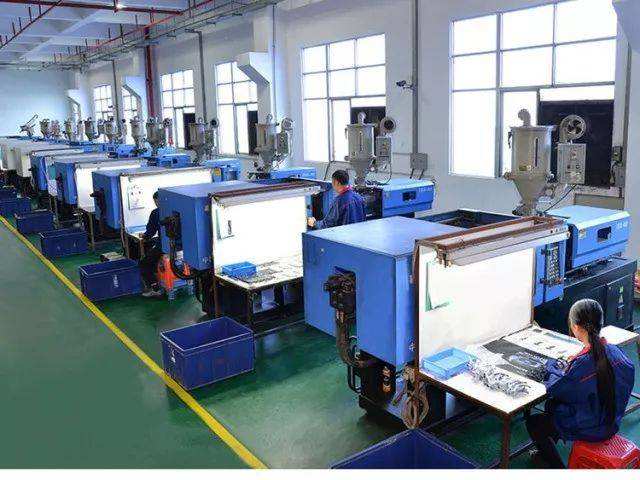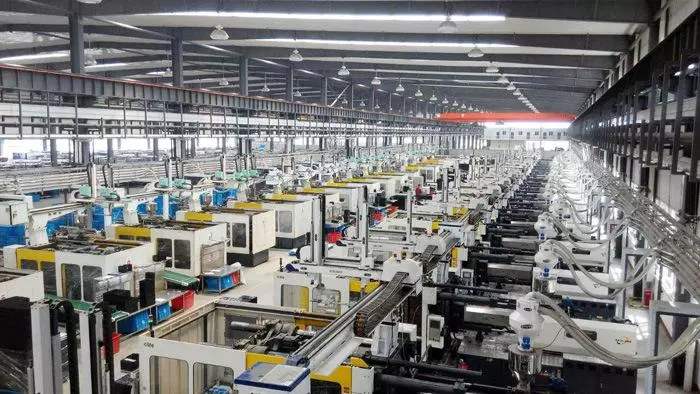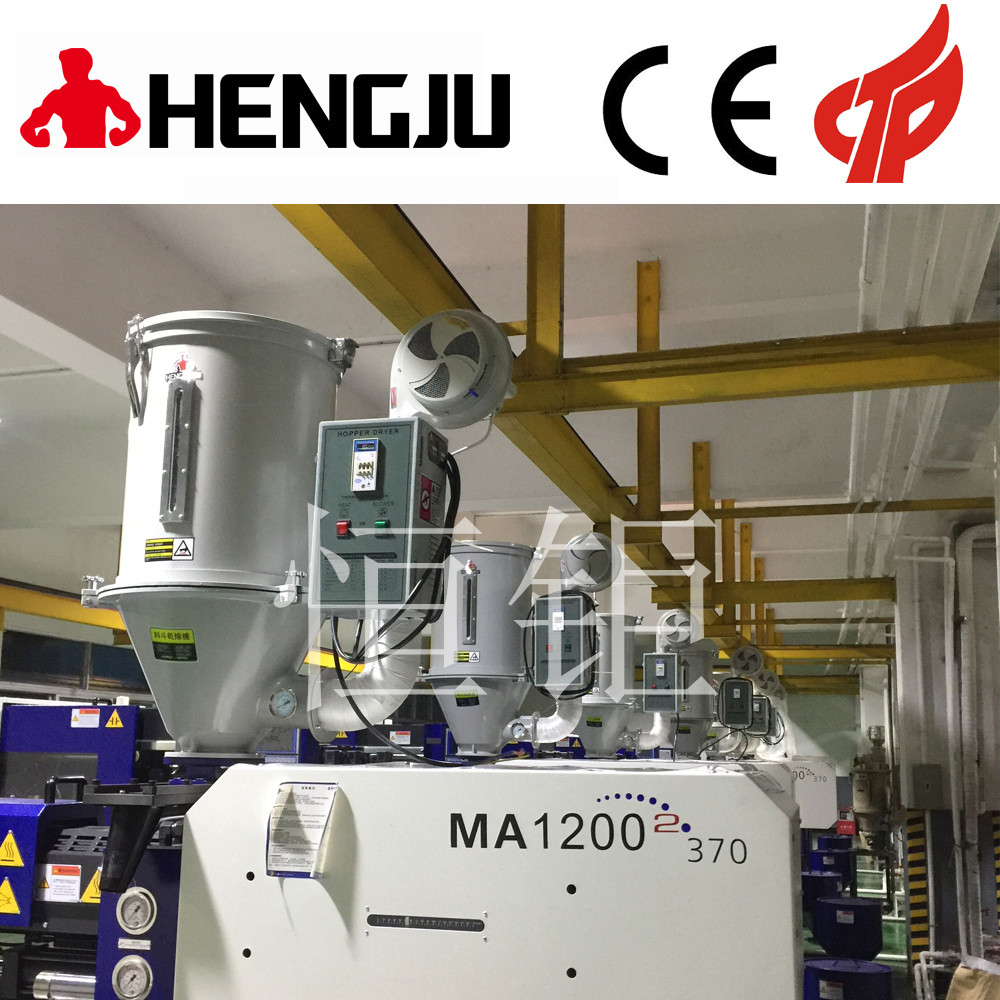| Dehumidification dryer Details description |
 |
| product name:Dehumidification dryer |
| release time:2020-10-16 |
| Numbering:Dehumidification dryer-10 |
| Brand:wto-btb |
| Price:¥By function |
| weight :By function |
| unit weight:Kg/set |
manufacturer:wto-btb |
| patent:wto-btb |
| Producing country:china |
simple description:This machine is suitable for cleaning and dewatering plastic flakes and granular materials. Its characteristics are as follows:
High degree of dehydration, low power consumption, fast efficiency and highly automated procedures, greatly reducingLabor intensity.Dehumidification dryer,
This is a device used to dehumidifying plastic resin to
achieve drying. For example,POM,ABS,TPE,PAL,ABS,CAB,
EVA(2),EVOH,LM(4),LCP,PA11,PA6.46.6,PAI,PAR,PBT,
PC,PC/ABS,PC/PBT,PE.HDEPE,LDPE black3%,PE.HDEPE.
LDPE black40%,PEEK,PE(1),PEN,PES,PET,PETG,PI,
PMMA,POM,PP,PPO,PPS,PS,[GPPS.EPS.HIPS],PSU,
PIT,PUR,PVC,SAN,SB,TPE,TPE,TPO,TPU,
Dehumidifier dryer and other plastic resins must be
dehumidified and dried during the production process to
improve the quality of the finished product. |
| Product alias:Dehumidification dryer,PET,PC,PLA,PE,Dehumidifyning dryer |
|
| Dehumidification dryer Product introduction |
|
Dehumidification dryer parameter
This machine is suitable for cleaning and dewatering plastic flakes and granular materials. Its characteristics are as follows:
High degree of dehydration, low power consumption, fast efficiency and highly automated procedures, greatly reducing
Labor intensity.
Dehydration clean, you can wash away the fine sand and other small debris in the plastic.
Advanced production technology, easy to clean, low noise, safe to use, universal use!
Made of stainless steel, strong and durable, it is an ideal advanced equipment necessary for enterprises.
The equipment produced and sold by our company not only has beautiful appearance, complete system functions, but also simple operation, low energy consumption, advanced technology and complete equipment.

Therefore, it can compete in the domestic and foreign markets without any disadvantage.
| Model |
Capacity (KG) |
HeatingPower
(KW) |
Blower
(W) |
Power
(V) |
Dimensions
(HxWxD,MM) |
Approx.Net Weight
(KG) |
| HGB-6 |
6 |
1.5 |
150 |
1φ 220V |
490x490x785 |
25 |
| HGB-12 |
12 |
2 |
160 |
1φ 220V |
540x435x850 |
35 |
| HGB-25 |
25 |
3 |
150 |
1φ 220V |
605x560x1240 |
50 |
| HGB-50 |
50 |
3.9 |
160 |
3φ 380V |
706x594x1410 |
75 |
| HGB-75 |
75 |
4.2 |
240 |
3φ 380V |
751x649x1520 |
105 |
| HGB-100 |
100 |
6.2 |
240 |
3φ 380V |
817x581x1670 |
125 |
| HGB-150 |
150 |
7 |
240 |
3φ 380V |
868x710x1800 |
160 |
| HGB-200 |
200 |
11 |
300 |
3φ 380V |
995x830x1930 |
210 |
| HGB-300 |
300 |
18 |
320 |
3φ 380V |
1160x975x2280 |
330 |
| HGB-400 |
400 |
20 |
360 |
3φ 380V |
1220x990x2330 |
365 |
| HGB-500 |
500 |
22 |
750 |
3φ 380V |
1150x1045x2430 |
385 |
| HGB-600 |
600 |
24 |
750 |
3φ 380V |
1210x1070x2540 |
400 |
| HGB-800 |
800 |
30 |
1500 |
3φ 380V |
1390x1120x2730 |
600 |
| HGB-1000 |
1000 |
36 |
1500 |
3φ 380V |
1525x1425x3670 |
650 |
| HGB-1200 |
1200 |
36 |
1500 |
3φ 380V |
1600x1510x3722 |
835 |
| HGB-1500 |
1500 |
40 |
2200 |
3φ 380V |
1730x1680x3880 |
900 |
| HGB-1800 |
1800 |
45 |
2200 |
3φ 380V |
1835x1680x4060 |
1005 |
| HGB-2000 |
2000 |
45 |
2200 |
3φ 380V |
1870x1710x4415 |
1130 |
| HGB-3000 |
3000 |
50 |
3700 |
3φ 380V |
2080x1920x4520 |
1650 |
| HGB-3500 |
3500 |
50 |
3700 |
3φ 380V |
2141x1976x4863 |
2120 |
| HGB-4000 |
4000 |
60 |
3700 |
3φ 380V |
2192x2040x4936 |
2870 |
| HGB-5000 |
5000 |
60 |
5500 |
3φ 380V |
2355x2160x5120 |
3510 |
Product alias:Dehumidification dryer,PET,PC,PLA,PE,Dehumidifyning dryer,Dehumidification dryer |
Dehumidification dryer Equipment principle
Main classification
The use of dehumidification dryers can be divided into stand-alone type and centralized type. Stand-alone dehumidification dryers usually include a dryer host, a drying barrel, and a suction machine. The use of a single machine is suitable for a small amount of various drying, and its advantages are good drying efficiency and convenient and fast material change.
The centralized dryer includes a dryer host and several drying barrels. Each drying barrel has an independent heating controller, which can dry several different materials at the same time, and cooperates with an air volume regulating valve to control the air volume of each drying barrel.
working principle
1. The cycle of the dehumidifier: through the operation of the compressor → discharge high-temperature and high-pressure gas through the exhaust port → enter the condenser for cooling → become low-temperature and high-pressure gas → intercept flow through capillary tubes → become low-temperature and low-pressure liquid → evaporate and absorb heat through the evaporator → Return to the compressor to become a low temperature and low pressure gas. So it goes back and forth.
2. The external circulation of the dehumidifier: under normal startup → through the operation of the fan → moist air is sucked in from the air inlet → passes through the evaporator → the evaporator absorbs the moisture in the air on the aluminum sheet → becomes dry air → Pass through the condenser to dissipate heat → blow out from the air outlet.
Dehumidification dryer It adopts double condenser structure to ensure lower return air temperature and dew point.
1. Dehumidification dryer Adopt P.I.D temperature control system, which has regeneration temperature setting and actual temperature display screen.
2. Adjustable rotating speed control of honeycomb wheel.

3. The honeycomb can reach a dew point of -40°C, and can reach a dew point of -50°C or even lower when the configuration is enhanced.
4. Optional PLC control with LCD touch man-machine interface.
5. Dew point meter that can monitor the dehumidification effect of the machine at any time is optional.

6. The machine occupies a small area and is easy to move, and the machine can be replaced at will.
Product alias:Dehumidification dryer,PET,PC,PLA,PE,Dehumidifyning dryer |
Dehumidification dryer application
1. Dehumidification at room temperature, pressure and humidity (T5 crystallization-38 months; R45%~95%) Environment: generally adopt freezing dehumidification methods (the most primitive methods are wind, sun, fire roasting and lime).
2. Low temperature, normal pressure and humidity, low temperature, normal pressure and low humidity environment: generally use regenerative adsorption rotor for dehumidification.
3. High temperature, normal pressure, normal humidity and high temperature, normal pressure and low humidity environment: Generally, a combination of water cooling and freezing (or wheel dehumidification) is used.
Fourth, high-pressure air dehumidification and drying: generally use air dryer filters, special freeze dryers (cold dryers), or use dissolved drying towers.
1. Foundry industry:
In this process, the wax mold is repeatedly immersed in the clay. These outer layers form the mold. When the wax is melted, the molten metal can be poured into it. Dry air (very low vapor pressure) is better than others. The heating source is more commonly used to dry the clay layer, because the dry air will not deform the wax mold. The use of a hygroscopic dehumidifier can stabilize the operating cost of foundries in the foundry industry and increase the production volume without slowing down the production pace in the wet months, and the process drying time can be shortened by 50%.
2. Dehumidification and drying of plastic raw material resin:
All plastic raw material resins have a certain degree of hygroscopicity. When the plastic raw material particles are extruded, the moisture is heated and evaporated by the plastic raw material dehumidifier. These vapors will cause cracks in the structure and appearance of the plastic material. The desiccant dryer can reduce the humidity in the plastic raw materials and improve the quality of the finished product.
Dehumidification dryer;This is a device used to dehumidifying plastic resin to achieve drying. For example,
POM,ABS,TPE,PAL,ABS,CAB,EVA(2),EVOH,LM(4),LCP,PA11,PA6.46.6,PAI,PAR,PBT,
PC,PC/ABS,PC/PBT,PE.HDEPE,LDPE black3%,PE.HDEPE.LDPE black40%,PEEK,PE(1),
PEN,PES,PET,PETG,PI,PMMA,POM,PP,PPO,PPS,PS,[GPPS.EPS.HIPS],PSU,PIT,PUR,
PVC,SAN,SB,TPE,TPE,TPO,TPU,
Dehumidifier dryerand other plastic resins must be dehumidified and dried during the production process to improve the quality of the finished product.
Product alias:Dehumidification dryer,PET,PC,PLA,PE,Dehumidifyning dryer,Dehumidification dryer |
Dehumidification dryer Precautions
Dehumidifying dryers are generally used in industrial production to dehumidify and dry raw materials with strong hygroscopicity to ensure high product forming rates. In the past, companies used traditional hot air blowers. If they encounter wet weather, the hot air blowers can hardly complete the drying purpose. The desiccant dryer came into being to improve the disadvantages of the hot air blower. So what is the difference between a dehumidifying dryer and an ordinary dryer?
1. Traditional hot air blower
In order to evaporate the moisture in the material, the traditional hot air blower will use the hot air heated by electric heating to dry the material at high temperature. However, due to weather factors, dry weather and humid weather, the moisture content in the air will be different, and the drying effect will also be different. In traditional hot air blowers, electric heating must first heat the incoming air. If the weather is too humid and the incoming air contains high moisture, it is difficult for the material to dry.
2. Dehumidification dryer
The dehumidification dryer effectively improves the shortcomings of ordinary dryers. It first draws in ambient air to remove moisture in the air under low dew point, and then heats the dried air to the dryer to dehumidify and dry the material. The work efficiency is greatly improved, the drying time is reduced, and the drying effect is better.
The air pipeline of the desiccant dryer adopts a closed circulation system, which can not be affected by the external weather, and the material can be dried well regardless of whether it is dry or humid. The filter installed in the desiccant dryer can prevent dust leakage from causing pollution in the factory and keep the air environment clean.
Generally speaking, the difference between these two dryers is that the moisture content of the inlet air used for drying is different. One has processed the inlet air moisture, and the other has not processed the inlet air moisture.
Dehumidification dryer Maintenance:
1. Dehumidification dryerCheck the parts regularly, 1-2 times a month. The inspection items are whether the worm, bearing, shaft seal and other movable parts are flexible in rotation and wear. Any defects should be repaired in time for normal use.
2.Dehumidification dryer Electrical control parts should be kept clean and sensitive, and faults should be repaired in time.
3.Dehumidification dryer When one use is completed or work is stopped, the remaining materials should be taken out of the plastic drying and mixing machine, and the remaining powder in each part of the machine should be cleaned. If it is out of service for a long time, the machine must be wiped clean and covered with a tarp cloth.
4.Dehumidification dryer When assembling and disassembling the mixing paddle of the plastic drying color mixing machine, it should be disassembled, steadily installed, and handled gently to avoid deformation and damage.
Correct operation for Dehumidification dryer:![Dehumidification dryer,Dehumidification dryer,PET,PC,PLA,PE,Dehumidifyning dryer,POM,ABS,TPE,PAL,ABS,CAB,EVA(2),EVOH,LM(4),LCP,PA11,PA6.46.6,PAI,PAR,PBT,PC,PC/ABS,PC/PBT,PE.HDEPE,LDPE black3%,PE.HDEPE.LDPE black40%,PEEK,PE(1),PEN,PES,PET,PETG,PI,PMMA,POM,PP,PPO,PPS,PS,[GPPS.EPS.HIPS],PSU,PIT,PUR,PVC,SAN,SB,TPE,TPE,TPO,TPU,Dehumidification dryer](/d/file/p/2020/10-16/1093ee17f45ba8f06e8165738ffe32f5.jpg) 1. Before starting up, check the power distribution of all equipment and pipelines before work. If there are hidden dangers, remove them and deal with them in time.
2. Clean the air inlet filter of the heater.
3. When the temperature of the imported heat transfer oil of the main engine rises to 100-120℃, the induced air can be started.
4. The inlet temperature of the cloth bag can reach 70℃ or higher, which can be opened for stirring, stirring, and the number of rotations is appropriate.
5. Air pressure: main machine inlet 6-10Mpa, cloth bag inlet, main machine outlet 20-26Mpa, cloth bag outlet 36-40Mpa.
6. Unloading will start within 15 minutes when the machine is turned on and the unloading cannot be stopped for any reason, until the material in the bag box is unloaded after the machine stops.
7. Each shift must have a special person to watch the instrument on the panel, and if there is an abnormality, and find it out in time, the watcher can not leave without authorization until the machine stops.
8. The feeding personnel should carefully observe the material during feeding to avoid foreign matter in the material and cause accidents.
9. In normal work, the temperature of the heat transfer oil inlet cannot exceed 250°C, otherwise it will be opened and closed immediately to cool down.
10. When you hear noise in the host during work, stop it immediately, open the side door of the host, cool down and use a magnetic stick or touch it to clean out the foreign objects.
11. When the power is cut off during work, immediately close the thermal oil valve, open and close, and open the side door of the main engine to cool down.
12.Dehumidification dryer When the power is cut, the cloth bag should be cleaned first. When the induced air is turned on, open the side door of the main unit to observe whether there is sparks. If necessary, spray with water (mist).
13. If there is a sudden change in the radiator oil bag pipeline (severe oil leakage, fire, etc.), the main oil guide valve should be closed immediately, and on-site fire fighting should be carried out immediately, and the boiler should be notified to cool down.
14. If sparks and explosions are found on the main engine and the bag box, immediately stop the induced air, open the closed valve, and close the valve of the main oil pipeline.
15. When you find sparks in the bag, take the time to unwind the material that is on fire, flush the bag with water, and control the amount of water to prevent the bag from being damaged even if the water level is too high.
16. Dehumidification dryer Operators must keep a clear head when they are on the job, and keep patrolling and checking and not leaving the job without permission.
1. Before starting up, check the power distribution of all equipment and pipelines before work. If there are hidden dangers, remove them and deal with them in time.
2. Clean the air inlet filter of the heater.
3. When the temperature of the imported heat transfer oil of the main engine rises to 100-120℃, the induced air can be started.
4. The inlet temperature of the cloth bag can reach 70℃ or higher, which can be opened for stirring, stirring, and the number of rotations is appropriate.
5. Air pressure: main machine inlet 6-10Mpa, cloth bag inlet, main machine outlet 20-26Mpa, cloth bag outlet 36-40Mpa.
6. Unloading will start within 15 minutes when the machine is turned on and the unloading cannot be stopped for any reason, until the material in the bag box is unloaded after the machine stops.
7. Each shift must have a special person to watch the instrument on the panel, and if there is an abnormality, and find it out in time, the watcher can not leave without authorization until the machine stops.
8. The feeding personnel should carefully observe the material during feeding to avoid foreign matter in the material and cause accidents.
9. In normal work, the temperature of the heat transfer oil inlet cannot exceed 250°C, otherwise it will be opened and closed immediately to cool down.
10. When you hear noise in the host during work, stop it immediately, open the side door of the host, cool down and use a magnetic stick or touch it to clean out the foreign objects.
11. When the power is cut off during work, immediately close the thermal oil valve, open and close, and open the side door of the main engine to cool down.
12.Dehumidification dryer When the power is cut, the cloth bag should be cleaned first. When the induced air is turned on, open the side door of the main unit to observe whether there is sparks. If necessary, spray with water (mist).
13. If there is a sudden change in the radiator oil bag pipeline (severe oil leakage, fire, etc.), the main oil guide valve should be closed immediately, and on-site fire fighting should be carried out immediately, and the boiler should be notified to cool down.
14. If sparks and explosions are found on the main engine and the bag box, immediately stop the induced air, open the closed valve, and close the valve of the main oil pipeline.
15. When you find sparks in the bag, take the time to unwind the material that is on fire, flush the bag with water, and control the amount of water to prevent the bag from being damaged even if the water level is too high.
16. Dehumidification dryer Operators must keep a clear head when they are on the job, and keep patrolling and checking and not leaving the job without permission.
Product alias:Dehumidification dryer,PET,PC,PLA,PE,Dehumidifyning dryer,Dehumidification dryer |
|
|




 +8613669807274
+8613669807274
 +8613669807274
+8613669807274 wto-btb@wto-btb.com
wto-btb@wto-btb.com Tel: +8613669807274
Tel: +8613669807274 SMS: +8613669807274
SMS: +8613669807274


















